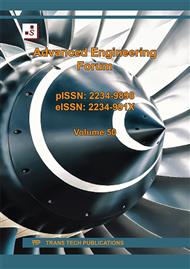p.17
p.31
p.39
p.59
p.73
p.89
p.101
p.111
p.125
Techno-Economical Effects of Adopting Small Capacity Transformers on Ado-Ekiti 11/0.415 kV Power Distribution Networks
Abstract:
The major portion power loss in power system occurs in the components of low voltage (LV) networks. Low voltage distribution system (LVDS) configuration has been observed to contribute significantly to power loss and unacceptable voltage drop in the system due to its structure and higher current flow in the network. The adoption of small capacity transformers as high voltage distribution system (HVDS) configuration is increasingly applied to the network for power loss reduction and the improvement of voltage profile. This study aims to evaluate the technical and economic implication of the use of HVDS configuration on Ado-Ekiti 11/0.415 kV power distribution networks and provide necessary recommendations. The network data was obtained and modeled on NEPLAN software for simulation and technical evaluation of the networks. The existing LV lines were upgraded to high voltage (HV) and remodeled with small capacity transformers and comparative analysis of the technical and economic effects of the networks were carried out. The results obtained showed that there could be feeder capacity increase of 92.03 kW and power loss reduction of 347.17 kW and 459.72 kVar following reconfiguration from LVDS to HVDS. The losses in the transformers and lines were significantly reduced by 37.8% for HVDS configuration when compared with the LVDS configuration. The voltage profile was significantly improved with voltage deviations in the range of ± 0.01 to ± 0.03 of bus voltage for the HVDS network when compared to the existing network. The cost of implementation of the HVDS network substation was calculated to be ₦807,238,715.50 and with the combination of annual savings and an increment in tariff of ₦5/kWh in the billing charge of unit energy consumption resulted in a payback period of 2 to 3 years for the estimated capital investment. This study showed that technical performance of HVDS implementation on the Ado-Ekiti network feeder was better than that of the existing network.
Info:
Periodical:
Pages:
73-87
Citation:
Online since:
September 2023
Authors:
Price:
Сopyright:
© 2023 Trans Tech Publications Ltd. All Rights Reserved
Share:
Citation:


